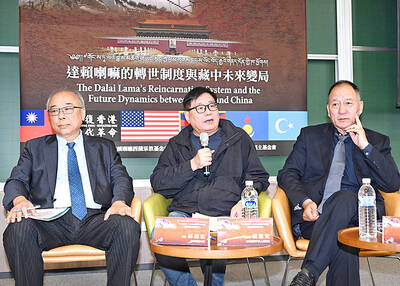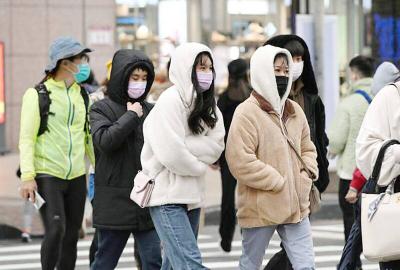A total of 1.52 million recycled plastic bottles used to build a pavilion at the Taipei International Flora Expo will be taken apart and sent to elementary schools nationwide to raise environmental awareness, the building’s sponsor said yesterday.
The Far Eastern Group, commissioned by the Taipei City Government to build the EcoARK — a boat-shaped exhibition hall made of PET bottles — said it would work with the Ministry of Education to distribute the bottles to 100 elementary schools for “green use.”
Schools that were damaged by Typhoon Morakot in 2009 will be given priority, group chairman Douglas Hsu (徐旭東) said.
He said all the honeycomb-shaped PET bricks used to build the EcoARK will be reused in creative projects so local communities can join in on the environmentally friendly action.
For instance, he said, the bricks can be reassembled into bus stops, greenhouses, galleries or even sheds for keeping livestock.
“Since the bottles were collected from the public, we think it is best that the materials go back into the hands of the people,” Hsu said.
The group said the inspiration for EcoARK came from the large number of PET bottles recycled in Taiwan every year — about 90,000 tonnes.
EcoARK, also known as the Pavilion of New Fashion, attracted more than 2 million visitors at the expo. It was featured on the National Geographic Channel’s Megastructures, which was aired in 168 countries in 34 languages, with an estimated audience of 370 million.

ALIGNED THINKING: Taiwan and Japan have a mutual interest in trade, culture and engineering, and can work together for stability, Cho Jung-tai said Taiwan and Japan are two like-minded countries willing to work together to form a “safety barrier” in the Indo-Pacific region, Premier Cho Jung-tai (卓榮泰) yesterday said at the opening ceremony of the 35th Taiwan-Japan Modern Engineering and Technology Symposium in Taipei. Taiwan and Japan are close geographically and closer emotionally, he added. Citing the overflowing of a barrier lake in the Mataian River (馬太鞍溪) in September, Cho said the submersible water level sensors given by Japan during the disaster helped Taiwan monitor the lake’s water levels more accurately. Japan also provided a lot of vaccines early in the outbreak of the COVID-19 pandemic,

Kaohsiung Mayor Chen Chi-mai (陳其邁) on Monday announced light shows and themed traffic lights to welcome fans of South Korean pop group Twice to the port city. The group is to play Kaohsiung on Saturday as part of its “This Is For” world tour. It would be the group’s first performance in Taiwan since its debut 10 years ago. The all-female group consists of five South Koreans, three Japanese and Tainan’s Chou Tzu-yu (周子瑜), the first Taiwan-born and raised member of a South Korean girl group. To promote the group’s arrival, the city has been holding a series of events, including a pop-up

TEMPORAL/SPIRITUAL: Beijing’s claim that the next Buddhist leader must come from China is a heavy-handed political maneuver that will fall flat-faced, experts said China’s requirement that the Dalai Lama’s reincarnation to be born in China and approved by Beijing has drawn criticism, with experts at a forum in Taipei yesterday saying that if Beijing were to put forth its own Dalai Lama, the person would not be recognized by the Tibetan Buddhist community. The experts made a remarks at the two-day forum hosted by the Tibet Religious Foundation of His Holiness the Dalai Lama titled: “The Snow Land Forum: Finding Common Ground on Tibet.” China says it has the right to determine the Dalai Lama’s reincarnation, as it claims sovereignty over Tibet since ancient times,

Temperatures in some parts of Taiwan are expected to fall sharply to lows of 15°C later this week as seasonal northeasterly winds strengthen, the Central Weather Administration (CWA) said today. It is to be the strongest cold wave to affect northern Taiwan this autumn, while Chiayi County in the southwest and some parts of central Taiwan are likely to also see lower temperatures due to radiational cooling, which occurs under conditions of clear skies, light winds and dry weather, the CWA said. Across Taiwan, temperatures are to fall gradually this week, dropping to 15°C to 16°C in the early hours of Wednesday